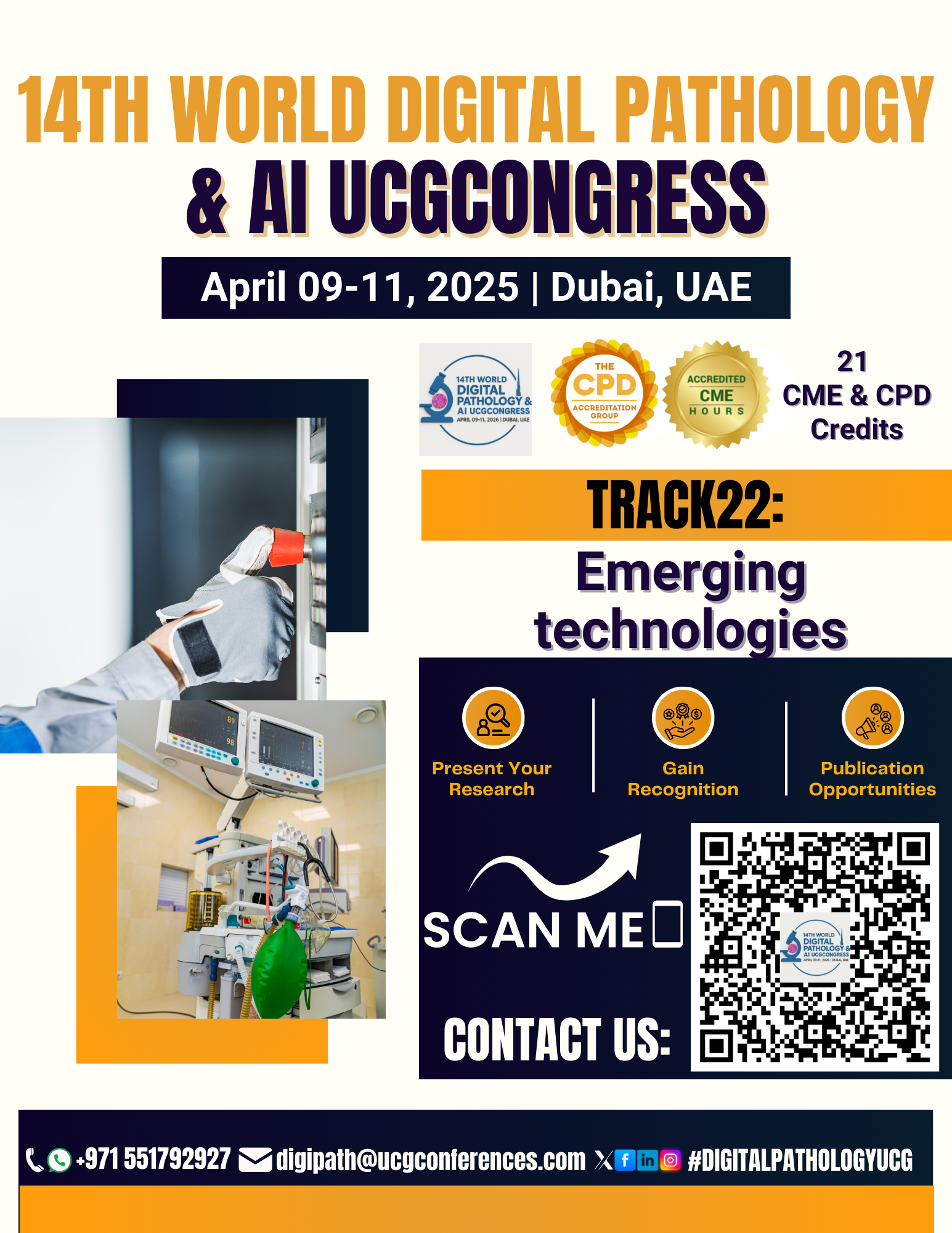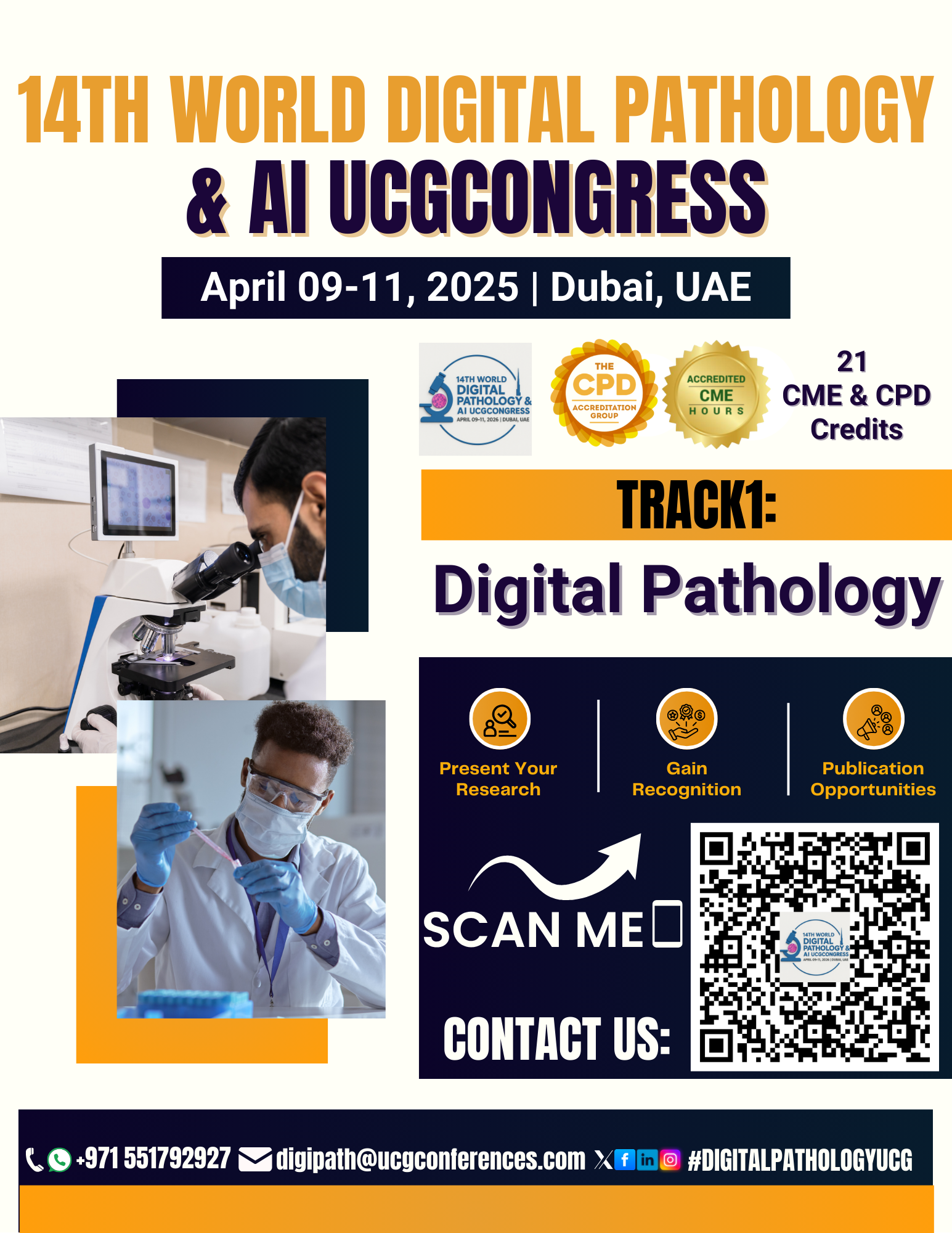



Sub track:-
Enhanced Image Quality Quantitative Analysis, Faster Turnaround Times,...

Sub track:-
Integration of Imaging Modalities, Advanced Image...

Track Overview:
The field of digital pathology is rapidly evolving,
with new technologies and innovations continuously reshaping diagnostic
practices and research. This track will focus on the emerging technologies that
are driving the future of pathology, from cutting-edge imaging techniques to
the integration of artificial intelligence, augmented reality, and molecular
diagnostics. Attendees will explore how these technologies are enhancing
accuracy, workflow efficiency, and clinical outcomes, and will gain insights
into the future potential of pathology.
Key Topics:
Advancements in Imaging Technology: Exploring the
latest developments in high-resolution imaging, multispectral imaging, and 3D
imaging technologies that are improving tissue visualization and analysis.
Artificial Intelligence and Machine Learning
Innovations: The next wave of AI technologies in digital pathology, including
the development of more sophisticated algorithms for image analysis, pattern
recognition, and predictive diagnostics.
Augmented Reality (AR) and Virtual Reality (VR):
How AR and VR are being integrated into pathology training, diagnostics, and
tumor visualization, enhancing the way pathologists interact with pathology
slides.
Molecular Pathology and Genomic Integration: Emerging
technologies that combine digital pathology with molecular diagnostics and
genomics, enabling more precise disease detection and personalized treatment
strategies.
Lab-on-a-Chip and Microfluidics: The potential of
lab-on-a-chip devices and microfluidics in digital pathology for faster and
more accurate diagnostic results at the point of care.
Wearable Technology and Pathology: The integration
of wearable devices with pathology workflows, enabling real-time monitoring of
disease markers and the potential for early diagnosis.
Blockchain and Data Security in Pathology: The role
of blockchain technology in enhancing data security, transparency, and trust in
digital pathology workflows, particularly with patient data and research
applications.
Learning Objectives:
Discover the emerging imaging technologies
revolutionizing digital pathology and their impact on diagnostic accuracy.
Learn about the advancements in AI and machine
learning that are enhancing pathology workflows and diagnostic capabilities.
Explore the role of augmented reality and virtual
reality in improving diagnostics, training, and tumor visualization.
Understand how molecular pathology and genomic
integration are paving the way for more personalized medicine and better
patient outcomes.
Gain insights into the potential of lab-on-a-chip,
microfluidics, and wearable technology in the pathology space.
Discuss the future of data security and
transparency in digital pathology, including the use of blockchain for secure
data management.
Target Audience:
Pathologists, clinicians, and researchers
interested in exploring the latest technologies in digital pathology.
Technology developers and innovators working on AI,
imaging, AR/VR, and genomic integration in pathology.
Healthcare administrators, lab managers, and
technology providers involved in adopting new technologies into pathology
practices.
Regulators and policy makers focusing on the
integration and standardization of emerging technologies in healthcare.
Speakers/Presenters:
Experts in cutting-edge imaging technologies,
including high-resolution and 3D imaging specialists.
AI and machine learning professionals working on
the development of pathology-specific algorithms and tools.
Researchers in molecular pathology and genomics
applying new technologies to improve diagnostics and personalized treatment.
Leaders in augmented and virtual reality
applications in pathology education and clinical practice.
Innovators in lab-on-a-chip, microfluidics, and
wearable technology for diagnostics and disease monitoring.
Regulatory experts focused on emerging technologies
in healthcare, including blockchain applications.
Conclusion:
This track will provide a comprehensive look at the
emerging technologies shaping the future of digital pathology. Attendees will
gain insights into the innovations that are enhancing diagnostic capabilities,
improving patient care, and streamlining pathology workflows. It will also address
the challenges and opportunities associated with the adoption of these
cutting-edge technologies.